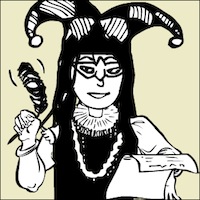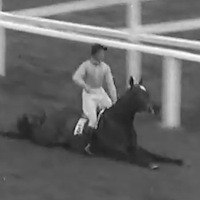Incident at Chappaquiddick (July 18, 1969)

On the morning of July 19, 1969, a local Chappaquiddick fisherman discovered the body of 28 year old Mary Jo Kopechne in Poucha Pond near Dike Bridge. The discovery would have been rather insignificant if it were not for the fact that the body was in the backseat of a black sedan. Further still, the black sedan was owned by none other than Massachusetts Senator, Ted Kennedy. The proverbial snowball only began its decent down the slippery slope of faulty decisions and cover-ups for one of the most publicized political mysteries the United States has seen.
July 18, 1969, six married men and six single women gathered for the Regatta celebration near Martha’s Vineyard. Among the men were Sen. Ted Kennedy and his cousin, Joseph Gargan. The women were all members of former Presidential nominee, Bobby Kennedy’s campaign staff—affectionately known as The Boiler Room Girls. The celebration was as much for relaxation as it was for getting the girls together again. The group arrived at Lawrence Cottage on Chappaquiddick Island in the early evening for dinner and cocktails. None of them suspected that their evening of revelry would turn to tragedy.
The details of the evening vary, depending on whose version of the facts one reads. The basic facts are these: Ted Kennedy and Mary Jo Kopechne left the Lawrence Cottage together. Ted Kennedy was the only one to return. According to Ted, he failed to negotiate the sharp right hand turn onto Main Street (Chappaquiddick Rd) and instead headed left onto Dike Road, then off the bridge. He dove into the water to try to rescue her, but failed in his numerous attempts to extract her from the car. He walked 15 minutes back to Lawrence Cottage to fetch Gargan and former US Attorney, Paul Markham. The three of them returned to the site of the crash and Markham and Gargan tried to rescue Mary Jo, but found the currents too strong.
According to Gargan, Kennedy and Kopechne left together and when Kennedy returned to Lawrence Cottage, told Gargan that he had an accident and told him of the car going over the side of the bridge. Kennedy directed Gargan and Markham to the location and waited while they attempted to rescue Kopechne. When they discovered rescue would be impossible, Gargan insisted, repeatedly, to Kennedy to contact the police. After about 20 minutes of Gargan’s insistence, Kennedy bolted from the car and swam the channel (approximately 500 yards) from Chappaquiddick to Edgartown where he had a room at the Inn. Gargan assumed that Kennedy would contact the police from that location.
Combining facts, testimony, and witnesses, the details of the night begin to take on a new light. Out of the group of twelve, only two were not imbibing—Ray LaRosa, who didn’t drink, and Gargan who was suffering from an upset stomach. Ted Kennedy asked his chauffer for the keys to his Oldsmobile, which the chauffer gave him. Ted Kennedy got behind the wheel of the car and drove.
The timeline of what happened is sketchy. Kennedy says that he and Kopechne left at 11:15pm to catch the last ferry from Chappaquiddick to Edgartown. However, Officer Look says that he saw the car around 12:40am—which is roughly the time the car went over the bridge into the pond.
More sketchy facts surface when one stops to realize that Ted Kennedy never actually reported the accident. When he returned to Lawrence Cottage, he passed four other houses that could have provided assistance—two of which were right at the pond. When he did arrive at the cottage, the first person he saw was LaRosa. He mentioned nothing of the accident, but chose, instead, to request his cousin (Gagran), and the other lawyer, Markham. He would later use the client disclosure privacy to keep the two men from revealing details of what happened. He also actively attempted to establish an alibi at the hotel at which he was staying.
When Kopechne’s body was discovered, the diver surmised she had not actually drowned. She seemed, instead, to have died of asphyxiation (though there was no autopsy performed at the request of her family). This determination was made from the fact that she was holding herself in position in the back seat to breath from a pocket of air in the wheel well. When the air ran out, she died. When the doctor prepared her body for embalming, he noticed a severe lack of water in the lungs which would confirm death by asphyxiation rather than drowning.
Had Ted Kennedy reported the accident right away, Ms. Kopechne most likely would have survived. Speculations abound as to why the accident occurred, why it was not reported, and why Kennedy lied about the details. Answers to the why’s may never come. Perhaps the Kopechne’s were paid handsomely to not pursue the truth. Perhaps there was an ugliness beyond what we can imagine that caused Kennedy to feel the need to allegedly kill Mary Jo Kopechne. We can discuss the ”perhaps”’s forever, but the final fact is: we don’t know.
For the timeline used for this article, please visit Y Ted K
For information on Mary Jo Kopechne, please visit Her Wiki
For the FBI files on the case, please visit Chappaquiddick
July 18, 1969, six married men and six single women gathered for the Regatta celebration near Martha’s Vineyard. Among the men were Sen. Ted Kennedy and his cousin, Joseph Gargan. The women were all members of former Presidential nominee, Bobby Kennedy’s campaign staff—affectionately known as The Boiler Room Girls. The celebration was as much for relaxation as it was for getting the girls together again. The group arrived at Lawrence Cottage on Chappaquiddick Island in the early evening for dinner and cocktails. None of them suspected that their evening of revelry would turn to tragedy.
The details of the evening vary, depending on whose version of the facts one reads. The basic facts are these: Ted Kennedy and Mary Jo Kopechne left the Lawrence Cottage together. Ted Kennedy was the only one to return. According to Ted, he failed to negotiate the sharp right hand turn onto Main Street (Chappaquiddick Rd) and instead headed left onto Dike Road, then off the bridge. He dove into the water to try to rescue her, but failed in his numerous attempts to extract her from the car. He walked 15 minutes back to Lawrence Cottage to fetch Gargan and former US Attorney, Paul Markham. The three of them returned to the site of the crash and Markham and Gargan tried to rescue Mary Jo, but found the currents too strong.
According to Gargan, Kennedy and Kopechne left together and when Kennedy returned to Lawrence Cottage, told Gargan that he had an accident and told him of the car going over the side of the bridge. Kennedy directed Gargan and Markham to the location and waited while they attempted to rescue Kopechne. When they discovered rescue would be impossible, Gargan insisted, repeatedly, to Kennedy to contact the police. After about 20 minutes of Gargan’s insistence, Kennedy bolted from the car and swam the channel (approximately 500 yards) from Chappaquiddick to Edgartown where he had a room at the Inn. Gargan assumed that Kennedy would contact the police from that location.
Combining facts, testimony, and witnesses, the details of the night begin to take on a new light. Out of the group of twelve, only two were not imbibing—Ray LaRosa, who didn’t drink, and Gargan who was suffering from an upset stomach. Ted Kennedy asked his chauffer for the keys to his Oldsmobile, which the chauffer gave him. Ted Kennedy got behind the wheel of the car and drove.
The timeline of what happened is sketchy. Kennedy says that he and Kopechne left at 11:15pm to catch the last ferry from Chappaquiddick to Edgartown. However, Officer Look says that he saw the car around 12:40am—which is roughly the time the car went over the bridge into the pond.
More sketchy facts surface when one stops to realize that Ted Kennedy never actually reported the accident. When he returned to Lawrence Cottage, he passed four other houses that could have provided assistance—two of which were right at the pond. When he did arrive at the cottage, the first person he saw was LaRosa. He mentioned nothing of the accident, but chose, instead, to request his cousin (Gagran), and the other lawyer, Markham. He would later use the client disclosure privacy to keep the two men from revealing details of what happened. He also actively attempted to establish an alibi at the hotel at which he was staying.
When Kopechne’s body was discovered, the diver surmised she had not actually drowned. She seemed, instead, to have died of asphyxiation (though there was no autopsy performed at the request of her family). This determination was made from the fact that she was holding herself in position in the back seat to breath from a pocket of air in the wheel well. When the air ran out, she died. When the doctor prepared her body for embalming, he noticed a severe lack of water in the lungs which would confirm death by asphyxiation rather than drowning.
Had Ted Kennedy reported the accident right away, Ms. Kopechne most likely would have survived. Speculations abound as to why the accident occurred, why it was not reported, and why Kennedy lied about the details. Answers to the why’s may never come. Perhaps the Kopechne’s were paid handsomely to not pursue the truth. Perhaps there was an ugliness beyond what we can imagine that caused Kennedy to feel the need to allegedly kill Mary Jo Kopechne. We can discuss the ”perhaps”’s forever, but the final fact is: we don’t know.
For the timeline used for this article, please visit Y Ted K
For information on Mary Jo Kopechne, please visit Her Wiki
For the FBI files on the case, please visit Chappaquiddick
You Should Also Read:
Revisiting Roswell
The Tunguska Event
BellaOnline's Crime Site

Related Articles
Editor's Picks Articles
Top Ten Articles
Previous Features
Site Map
Content copyright © 2023 by Christa Mackey. All rights reserved.
This content was written by Christa Mackey. If you wish to use this content in any manner, you need written permission. Contact Lane Graciano for details.







